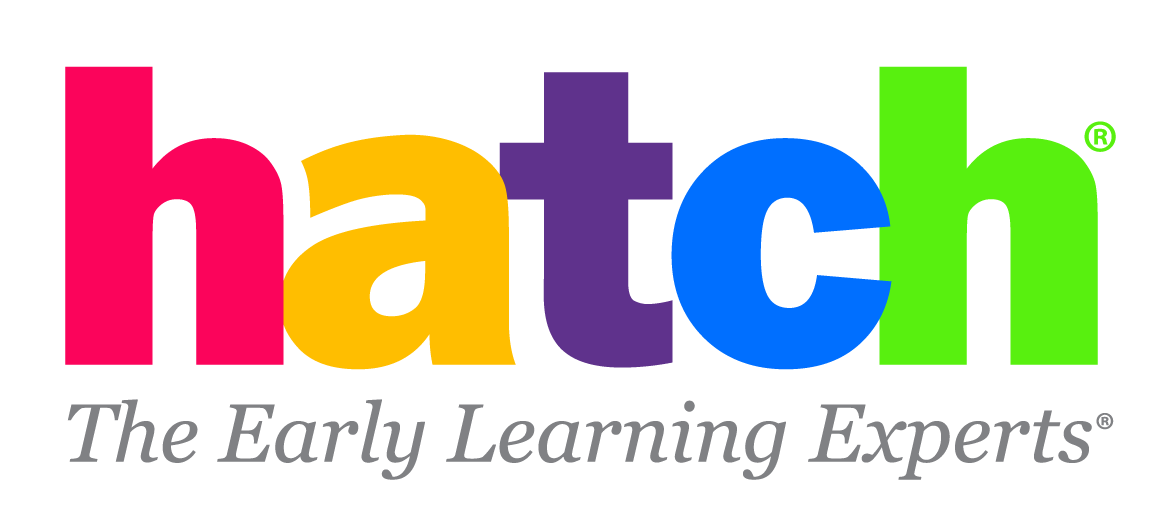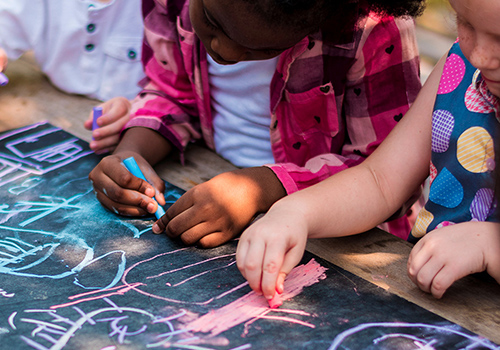If we want all students to succeed we need to eradicate “teaching to the middle.” That approach won’t work because it leaves too many students out of the equation.
Experts like Carol Ann Tomlinson, Rick Wormeli and Larry Ferlazzo recommend another approach—differentiated instruction. They say educators can use differentiation to support all students; from the student who struggles to sit still, to the student whose knowledge exceeds her teacher’s on a topic
Differentiating in early learning could help all children experience learning success at an early age, before ideas like “this is too hard,” “I’m not smart enough,” or “I’ll never get it,” start to creep into their minds.
Consider this: differentiation is deeply rooted in assessment (more on this later). Imagine if that growing body of knowledge around a child’s strengths, struggles, preferred learning style, etc. could expand and follow that student throughout their school years. Everything from planning lessons to building teacher-student connections would be easier.
But before we dig deeper let’s address two questions about differentiation that often cause confusion.
What is differentiation?
Carol Tomlinson has been a differentiation proponent for decades. In her most recent book, she offers this definition:
“At its most basic level, differentiating instruction means ‘shaking up’ what goes on in the classroom so that students have multiple options for taking in information, making sense of ideas, and expressing what they learn. In other words, a differentiated classroom provides different avenues to acquiring content, to processing or making sense of ideas, and to developing products so that each student can learn effectively.”
Note: differentiation isn’t personalized learning where learning is based on an individual student’s interests, preferences, needs and pace. As lovely as that would be, one-to-one teaching in a class with 20 or more students isn’t feasible.
What does differentiation look like?
Spoiler alert! There is no one way to differentiate and that’s both difficult and wonderful. Difficult because it can lead to confusion, wonderful because it’s open-ended and designed for teachers to change how they differentiate so it meets the specific needs of the students they are teaching at a point in time.
The key idea of differentiation is to try and meet every learner where they are and help propel them as far forward in their learning as possible. How?
- By choosing and adapting content that meets all the levels of learning in your current class.
- Offer a range of activities based on students preferred learning methods.
- Give students a variety of ways to demonstrate their learning.
- And vary the learning environment from whole-class, small-group instruction and independent learning to support all students.
As Larry Ferlazzo explains in this Education Week video, “[Differentiated instruction] is recognizing that all of our students bring different gifts and challenges and that as educators we need to recognize those differences and use our professional judgment to flexibly respond to them in our teaching.”
For example, when one of Ferlazzo’s students wasn’t interested in writing an argument essay about the worst possible natural disaster, Ferlazzo gave him the option to write about something he was passionate about: football. The student turned in an essay (the first he’d ever written for school) that followed all the guidelines of a good argument essay, explaining why his favorite football team was the best. Boom, mission accomplished! Thank you, differentiation.
Why should you differentiate?
I’m going to let teachers give you the answer to that question.
Elton Stetson, professor of education at Texas A&M University-Commerce, and Karen Anderson, leadership coach for Coaching for Results, conducted a differentiation experiment with 48 elementary teachers.
The teachers tested differentiation in their classrooms over a semester with support from the book Differentiating Instruction in the Regular Classroom: How to Reach and Teach All Learners, Grades 3-12 by Diane Heacox.
At the end of the experiment, Stetson and Anderson asked teachers to answer two questions:
First, “What were the greatest benefits of differentiation?” Here’s what teachers reported back:
- Students were motivated to stay engaged in learning
- Student needs were being met.
- Students experienced greater student success and felt learning was more relevant.
- Students felt greater ownership of content, products and performances.
- Teachers gained new insights.
Second, “What were the biggest problems associated with differentiated instruction?” Here’s what teachers said:
- Learning how DI (differentiated instruction) works, finding activities, trying new ideas, developing the assessments for each lesson and working with so many different learning styles and intelligences among the children was daunting and sometimes overwhelming
- Finding planning time was an ongoing challenge.
But here’s the key: all 48 teachers agreed, “Benefits to the students far outweighed the challenges of time and planning.”
How can technology help?
So how do we ease the challenges of differentiated instruction so students (and teachers) can reap the benefits? One way is through technology use.
Assessment is essential to differentiated instruction. As Rick Wormeli shares in a recent paper, “It becomes differentiated practice when teachers use assessment to guide instructional decisions.” In other words, you can’t differentiate for your students until you have an understanding of what knowledge they bring to the classroom.
In early childhood education, assessment takes the form of teacher observations. But, as you likely know, individual observation in a room full of 20 four-year olds is easier said than done.
Tools like Ignite by Hatch help make the process of differentiating less time consuming with assessment tools that focus on observation. While children play engaging learning games, reporting tools help teachers see exactly where a student is in their learning and then meet their learning needs with appropriate content.
Take Montegut Elementary school for example. Children at this Title I school were struggling to meet Louisiana’s mandatory literacy levels before adopting Hatch tablets with HatchSync Powered by GOLD®.
As children played games that helped them develop core math and literacy skills, their progress was captured, monitored and shared with teachers as documentation they could use for assessment. This answers the question: “What does this child know?”
Teachers then used that knowledge to inform small group instruction, adjust lesson plans and give individual support where it was needed.
In less than six months students at Montegut reached their state target levels, something they attribute to using Hatch’s tools and assessment features to meet their students exactly where they were in their learning.
Short term pain for long-term gain
Differentiation isn’t a simple fix to meeting your children’s diverse learning needs, but it’s proven to be an effective approach to helping students succeed. And with the right tools and supports in place, differentiated instruction doesn’t have to be overwhelming.
Think of it this way: every year, over 1.2 million students drop out of high school in the United States1. If, from an early age, differentiated instruction could help even one percent of those students feel more engaged in learning and be more successful in school, wouldn’t it be worth the effort? That’s 1,200 more students who would graduate every year. Children may go on to be a doctor who saves lives, a leader who effects change, a police officer who protects our streets...the possibilities are endless.
Start differentiating now with these useful resources
- Differentiation Central
- If you do nothing else, watch Larry Ferlazzo’s video Differentiating Instruction: It’s not as hard as you think

